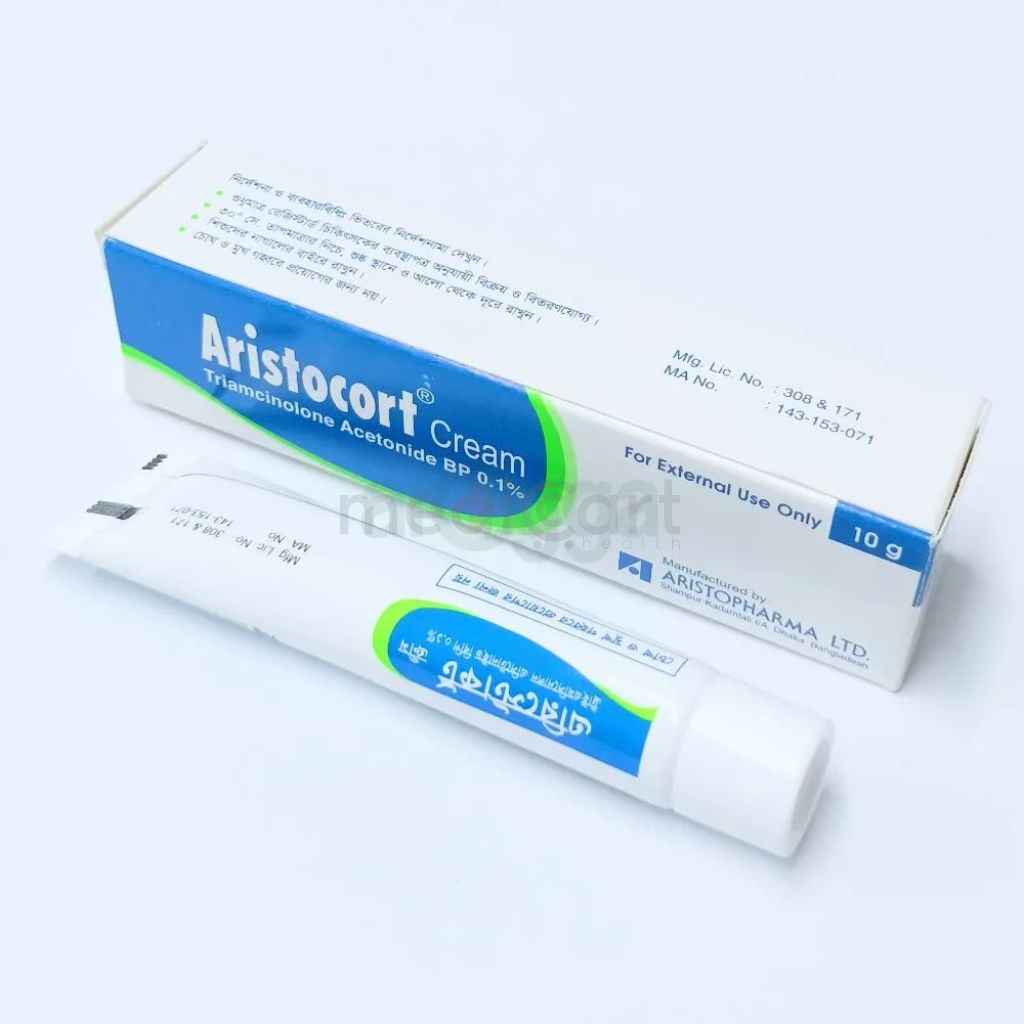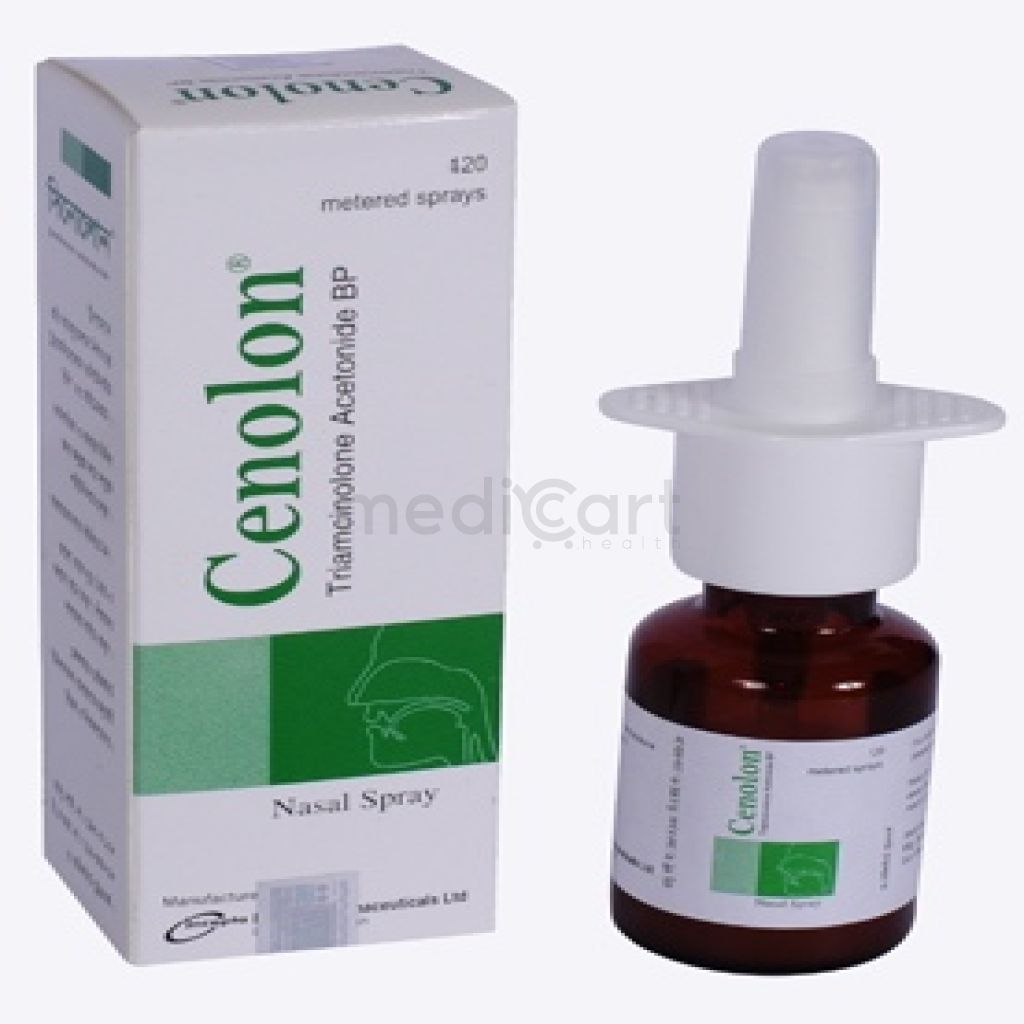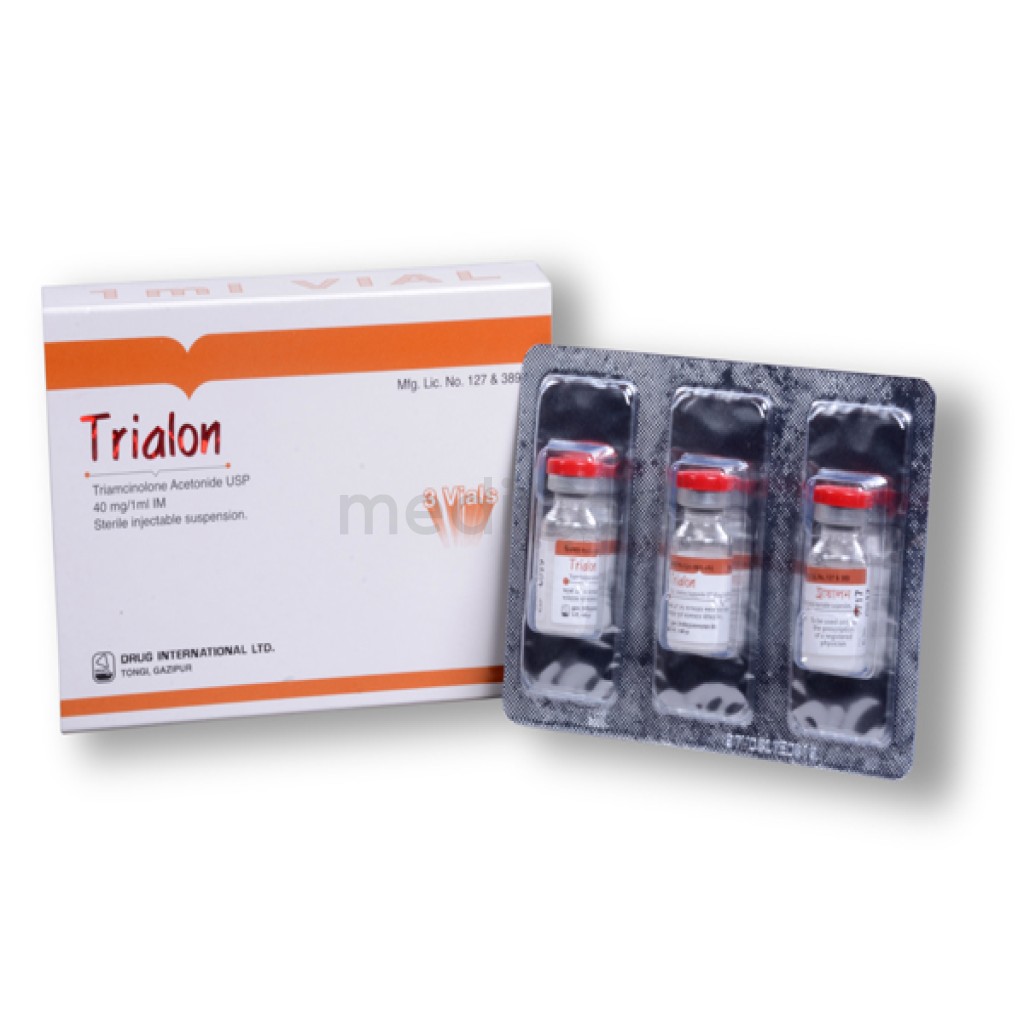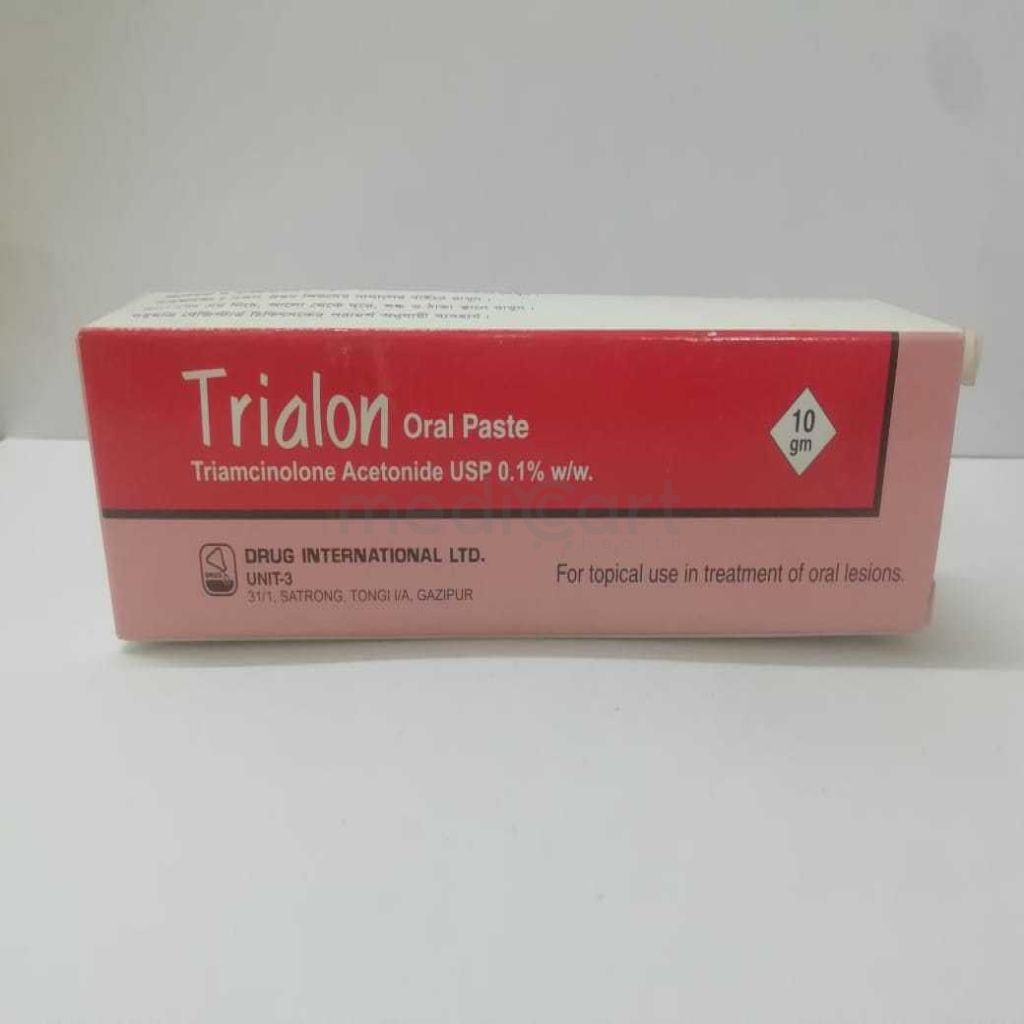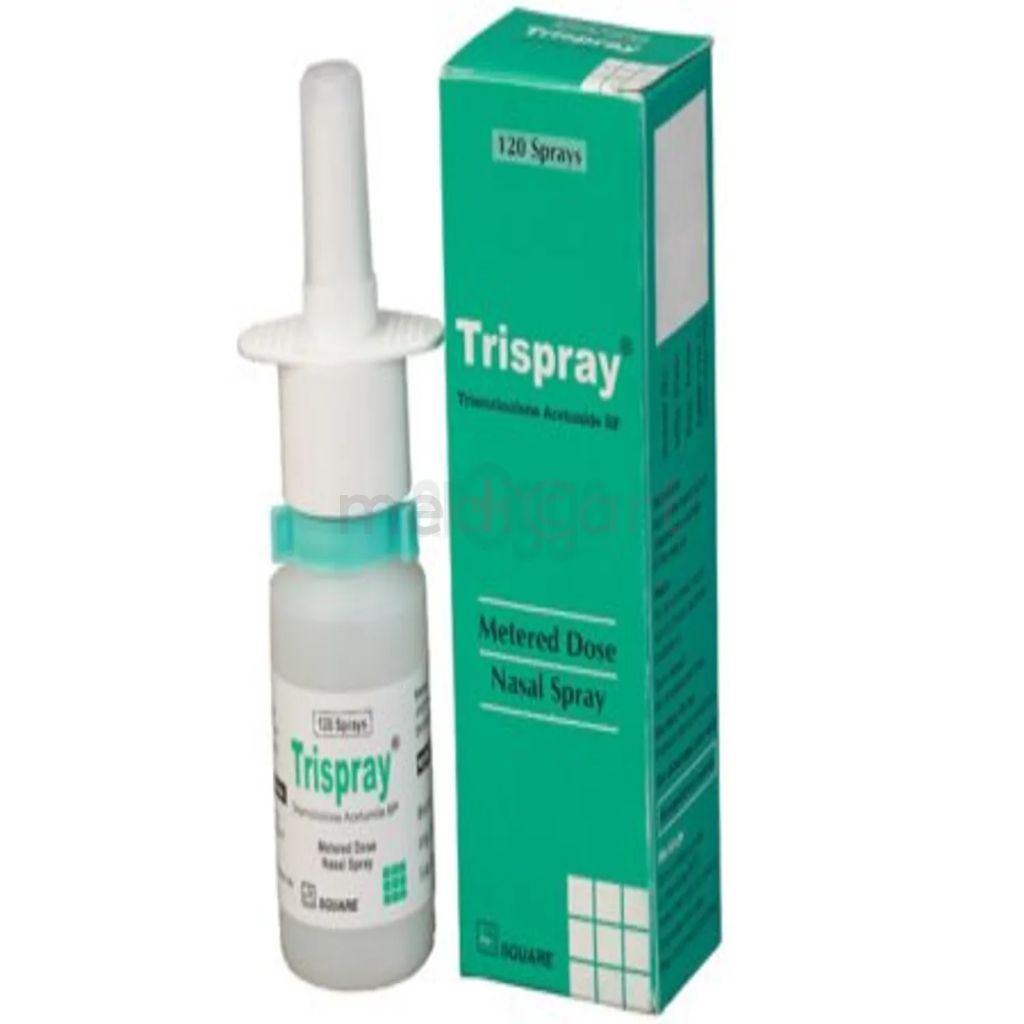

Trispray Nasal Spray - 55 mcg
Nasal Spray* Delivery will be done in Dhaka city only.
More Information About - Trispray Nasal Spray - 55 mcg
Description
Generic Name
Triamcinolone Acetonide Nasal prep
Precaution
Delay initiation of treatment in patients with recent nasal surgery, nasal trauma, nasal septum ulcers (until healing has occurred) Prolonged use may increase incidence of secondary infection Monitor for vision change, or with history of increased IOP, glaucoma, or cataracts Potential worsening of existing tuberculosis, fungal, bacterial, viral, or parasitic infections, or ocular herpes simplex More serious or fatal course of chickenpox or measles in susceptible patients Risk for hypercorticism and adrenal suppression with higher than normal doses Potential reduction of growth velocity in children Lactation: Unknown whether distributed in breast milk; exercise caution
Indication
Allergic rhinitis, Hay fever, Allergic and inflammatory responses.
Contra Indication
Triamcinolone Acetonide is contraindicated in patients with a sensitivity to the active or inactive ingredients. Untreated systemic fungal, bacterial, viral or parasitic infection, hypersensitivity
Dose
N/A
Side Effect
1-10% Flu syndrome [children] (9%),Pharyngitis (5-8%),Headache [children] (6%),Bronchitis [children] (3%),Dyspepsia (3-5%),Tooth disorder [children] (3%),Epistaxis (3-5%),Excoriation [children] (3%),Increased cough (2- 8%),Upper abdominal pain [children] (5%),Diarrhea [children] (3%),Rash [children] (3%),Asthma [children] (3%),Rhinorrhea [children] (2%)
Pregnancy Category
Name : C
Description
Animal reproduction studies have shown an adverse effect on the fetus and there are no adequate and well-controlled studies in humans, but potential benefits may warrant use of the drug in pregnant women despite potential risksMode of Action
Triamcinolone has mainly glucocorticoid activity. It suppresses the migration of polymorphonuclear leukocytes and reduces capillary permeability thereby decreasing inflammation.
Interaction
No significant drug interaction has been reported.
Pregnancy Category Note
Pregnancy Category: C Lactation: Unknown whether distributed in breast milk; exercise caution
Adult Dose
Nasal Treatment and prophylaxis of allergic rhinitis Adult: The recommended starting dose is 220 mcg (4 sprays) into each nostril once daily. When the maximum benefit has been achieved and symptoms have been controlled, reducing the dose to 2 sprays (110 mcg) per day has been shown to be effective in maintaining control of the allergic rhinitis symptoms.
Child Dose
Nasal Treatment and prophylaxis of allergic rhinitis Children >12 years: Initially, 2 sprays (110 mcg) into each nostril once daily, maximum dose is 220 mcg (4 sprays) into each nostril once daily. When the maximum benefit has been achieved and symptoms have been controlled, reducing the dose to 2 sprays (110 mcg) per day has been shown to be effective in maintaining control of the allergic rhinitis symptoms. Children 6-12 years: The recommended starting dose is 2 sprays (110 mcg) per day given in each nostril once daily. Children not responding adequately to 110 mcg per day may use 220 mcg (4 sprays in each nostril) once daily. Once symptoms have been controlled, the dosage may be decreased to 2 sprays (110 mcg) once daily. Children 2-5 years of age: The recommended and maximum dose is 2 sprays (110 mcg) per day given in each nostril once daily.
Renal Dose
N/A
Administration
Before using for first time, prime pump by releasing 5 sprays into air away from face If not used for >2 weeks, repeat priming by releasing 1 spray into air before using
Disclaimer
The information provided herein are for informational purposes only and not intended to be a substitute for professional medical advice, diagnosis, or treatment. Please note that this information should not be treated as a replacement for physical medical consultation or advice. Great effort has been placed to provide accurate and comprehensive data. However, Medicart along with its authors and editors make no representations or warranties and specifically disclaim all liability for any medical information provided on the site. The absence of any information and/or warning to any drug shall not be considered and assumed as an implied assurance of the Company.

